Zürich – Europe’s new capital of cool
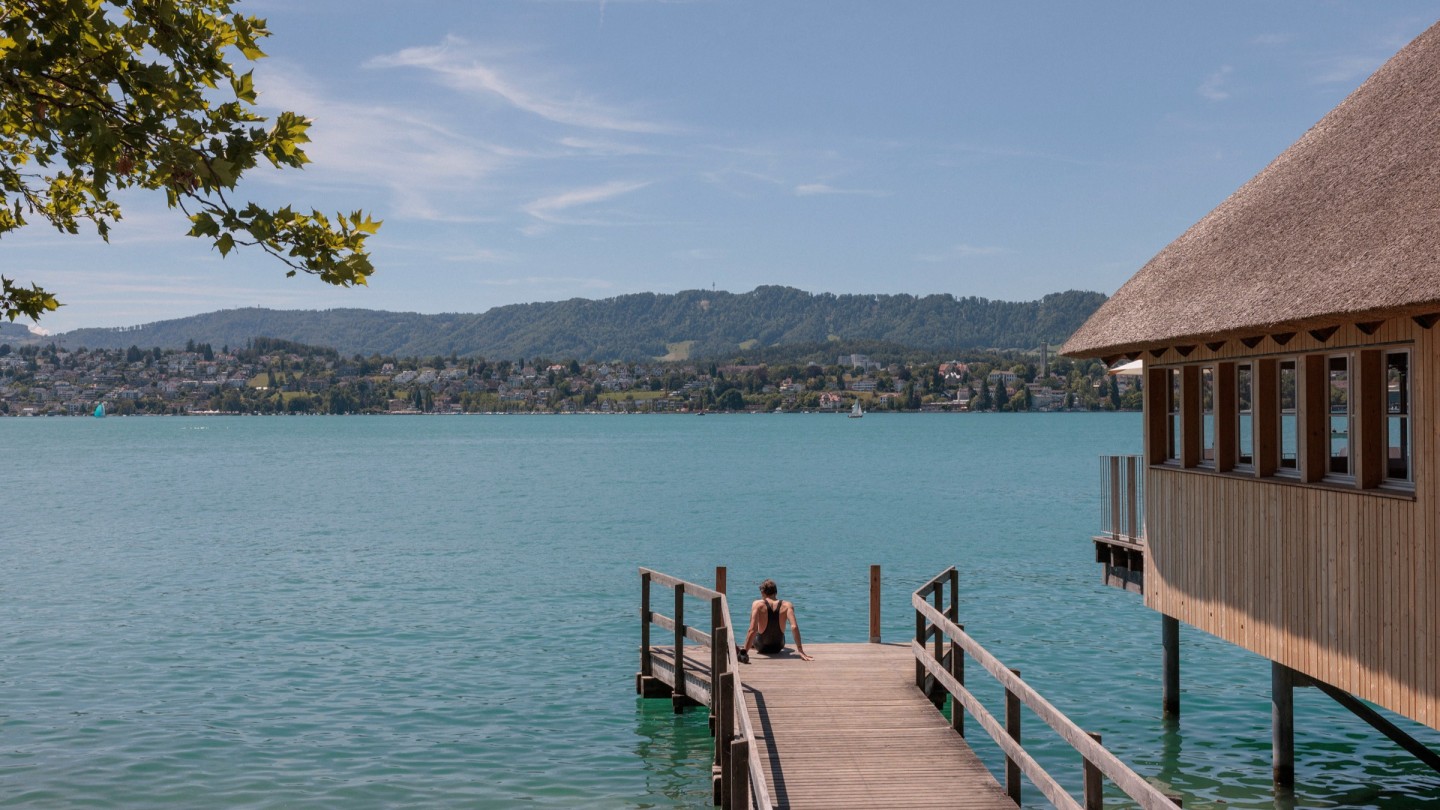
Roula Khalaf, Editor of the FT, selects her favourite stories in this weekly newsletter.
A quiet weekend afternoon in Zürich. At the Galerie Gmurzynska on the city’s central Paradeplatz, an exhibition devoted to Picasso hangs along the gallery’s undulating Zaha Hadid-designed walls. Suddenly a smartly dressed woman dashes in. “Excuse me, is that for sale?” she asks the young man at reception, pointing to a Picasso drawing as though enquiring after a lamb chop. Sadly not, he replies – it’s already sold – and she’s out of the door with a shrug. I ask the receptionist if this happens very often. Well, you have to remember, he replies politely, we’re opposite places like that – gesturing to the vast headquarters of a major Swiss bank. I take it as a yes.
So far, so Zürich. Switzerland’s largest city, wealthy and venerable for centuries, arguably still labours under the impression that it is slick, staid, bourgeois and not a little entitled. But there is, in fact, another Zürich, far looser and more playful than the austere façade. It would make sense in a city that is rapidly expanding: Zürich recently reached its largest population size since 1962. If it is no longer a byword for banking, the industry having dispersed, it is still a hub for companies such as Google (it’s home to its largest continental European HQ) and always drawing in international talent; meanwhile, other Zürich natives, or “Zürchers”, have chosen to return. One symbol: in the ever-gentrifying west of the city, formerly an industrial zone where young Zürchers would go for underground raves, the sportswear company On has just opened its On Labs flagship store, where 651 staff from 54 nationalities congregate to work, exercise and enjoy its vegan restaurant. The average age, says On’s founder, David Allemann, a proud native Zürcher, is 31.

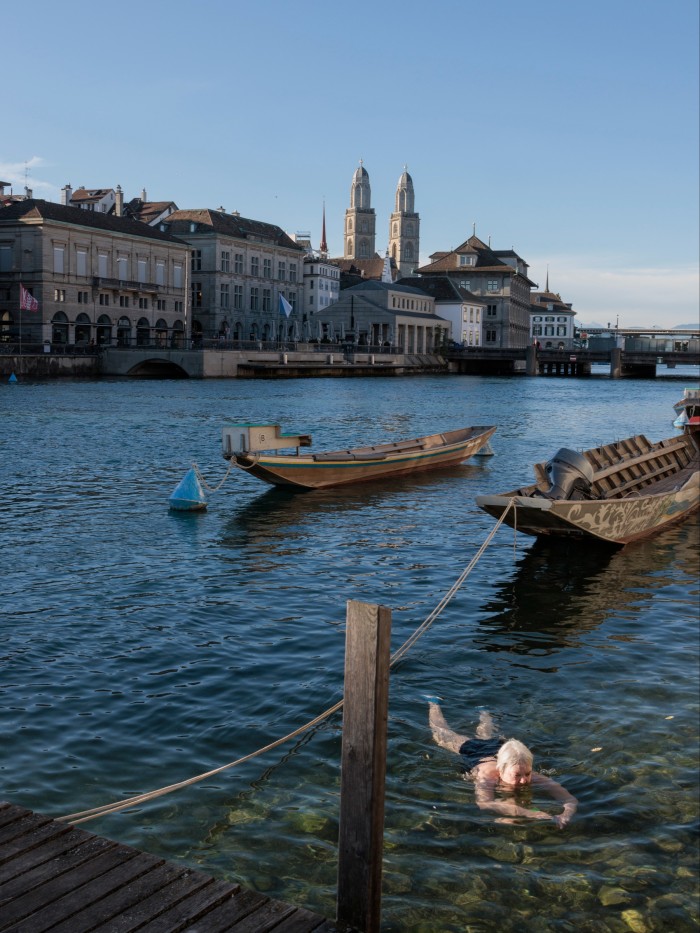
Unsurprisingly, this growth spurt is echoed by a strong proposition across the arts, food, even fashion (an outlier is Balenciaga’s Demna, who long lived here, though he has apparently now decamped even further out). Galerie Gmurzynska is just one of a hundred or so galleries and off-spaces in the city, a pretty dizzying number considering the city’s still relatively tiny size – 440,000 and counting. In 2021, its vast David Chipperfield-designed Kunsthaus finally opened; in January it will welcome a brand-new dynamic director who has already got everybody in a lather by announcing that art is “sex for the brain”. Across the square, at the city’s 19th century Schauspielhaus, the American artist Wu Tsang is reinventing classics such as Pinocchio with a sensibility finessed on the queer club scene of LA. In terms of style, the suave propositions of Mats Klingberg’s Trunk store are offset by Tasoni, run by sisters Taya and Tary Sawiris, a high-fashion boutique selling a cutting-edge mix of Molly Goddard, Martine Rose or Marine Serre. And in gastronomy, a new young generation has opened a range of pop-ups, restaurants and bars, moving the stolid Zürcher diet on from its classic staples of French, Italian and Swiss.
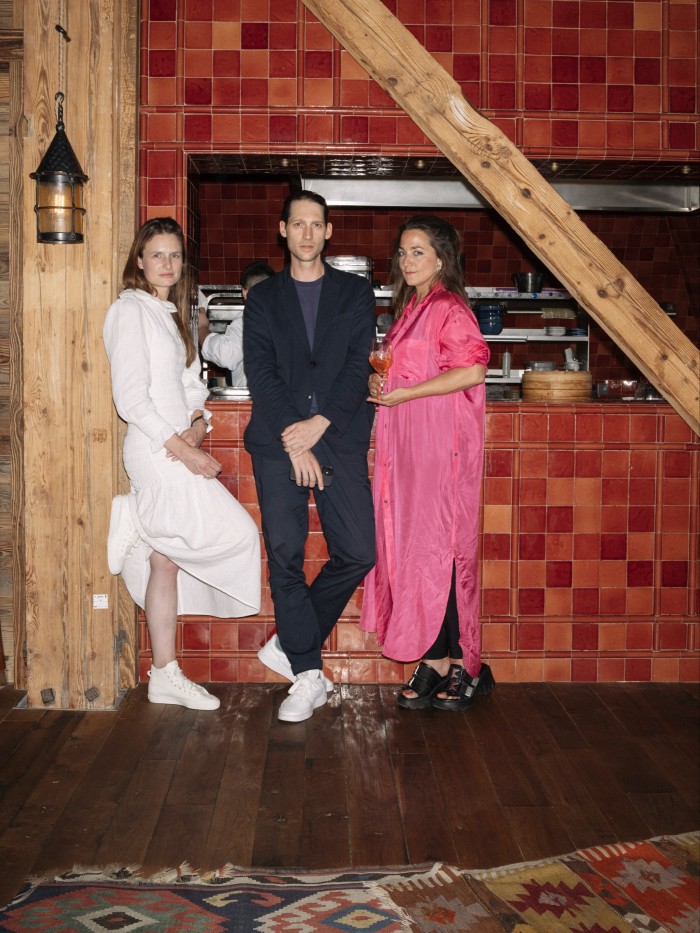
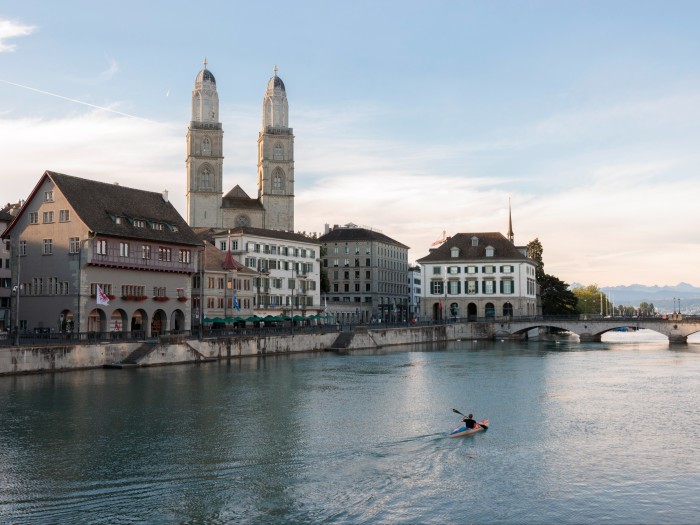
“What I love about Zürich is that under the glistening polish of the city, you have this frenetic pulse,” Matthieu da Rocha, art buyer at Bottega Veneta, tells me during Zürich’s Art Weekend. “It’s a city of unexpected contrasts. You can start the day walking along the lake, and go have lunch at Kronenhalle, this institution that has never changed” – he means the august restaurant whose walls are lined with Picassos, Chagalls and Mirós, with Giacometti-designed tables and lights in the bar. “And you can end up in a rave under the bridge. It’s a city that gives a lot – but you have to go find it.”
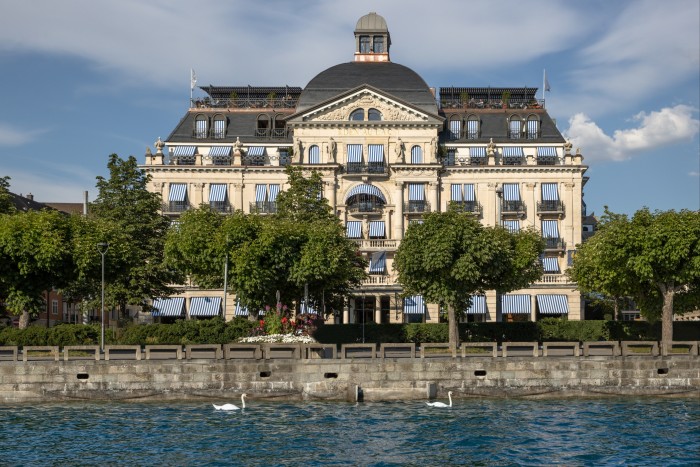
The Art Weekend, now in its fifth year, is a mini-festival of sorts, providing more than 100 events over three days, all free. It also provides a handy quick way of mapping out Zürich, since there are now galleries in nearly every corner of the city. Whereas some are in the historic central quarter, others have congregated around the Löwenbräu, which was renovated in the 2000s to provide a cultural hub. It’s been a classic case of turn-of-the-century industrial-chic gentrification, now spread to areas further south and west, well into its former red-light district (or not so former, as one kindly lady’s welcome on the street, at 3pm, attests). You can swiftly go from a rough-and-ready space like the brilliantly named Last Tango, in another converted industrial building, to the up-and-coming Weiss Falk Zürich in an airy old-school mansion in the northern suburbs. In short, you get both pedigree and edge. When Charlotte von Stotzingen set the Weekend up, she was “astonished – why doesn’t this thing exist already?”

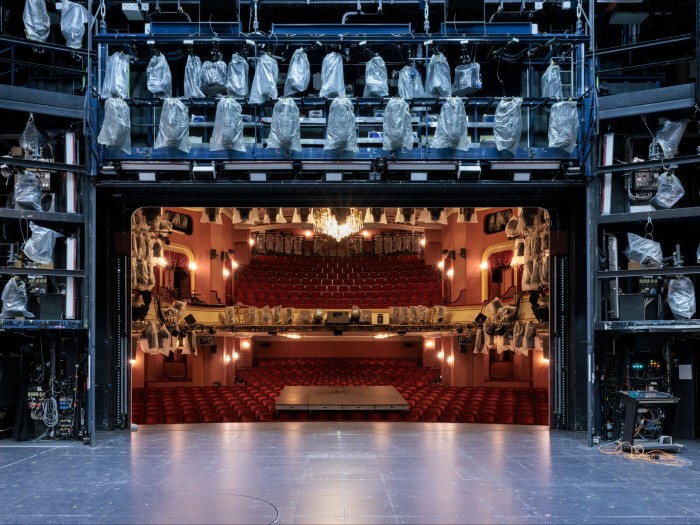
Von Stotzingen’s is a typical story in that she came to Zürich in 2017, from Kenya, and was somewhat sceptical about its charms: asked to sum up her initial prejudices, she snores. She quickly decided that it would be brilliant to provide an event the weekend before Art Basel next door: a smaller, more informal event which could highlight the city’s slightly underplayed scene. Because Zürich is, many tell me, notoriously discreet; it doesn’t sell itself much, either because it doesn’t want to or it doesn’t need to. Hence a reputation for loftiness or dullness or both. But, in fact, the city is a hub for all sorts of innovation: one of the world’s largest AI centres, for instance, opened here two years ago. The city’s deep pockets obviously help. Von Stotzingen recalls asking one researcher at a lab what the limit on his budget was. There is no limit, he replied – the only limit is my brain.
Zürich has a deep cultural history, from being the founding place of Dada, to a refuge for artists at Kronenhalle, to being the home of eminent collectors who’ve stuffed their houses on the hills with the very best of 21st-century art. It has also had its moments of revolt, such as in the 1980s when its youth rioted because the local government wanted to spend their budget on the opera house (the youngsters wanted investment in their own cultural centre – and they got it). But there is a new dynamism now, says Marie Lusa, who runs the Galerie Gregor Staiger with her husband (that’s his name). Their own roster includes the Turner-nominated Monster Chetwynd, hotly tipped Somaya Critchlow and a local Zürich treasure, veteran gay photographer Walter Pfeiffer. She says that the fact that artists such as Chetwynd or Tsang are actually settling in the city is testament to its fresh appeal. “I would never have imagined that five years ago,” she says. “It’s kind of a return to 1916, when people came from all over to create Dada. I feel like Zürich could be a laboratory for new ideas.”
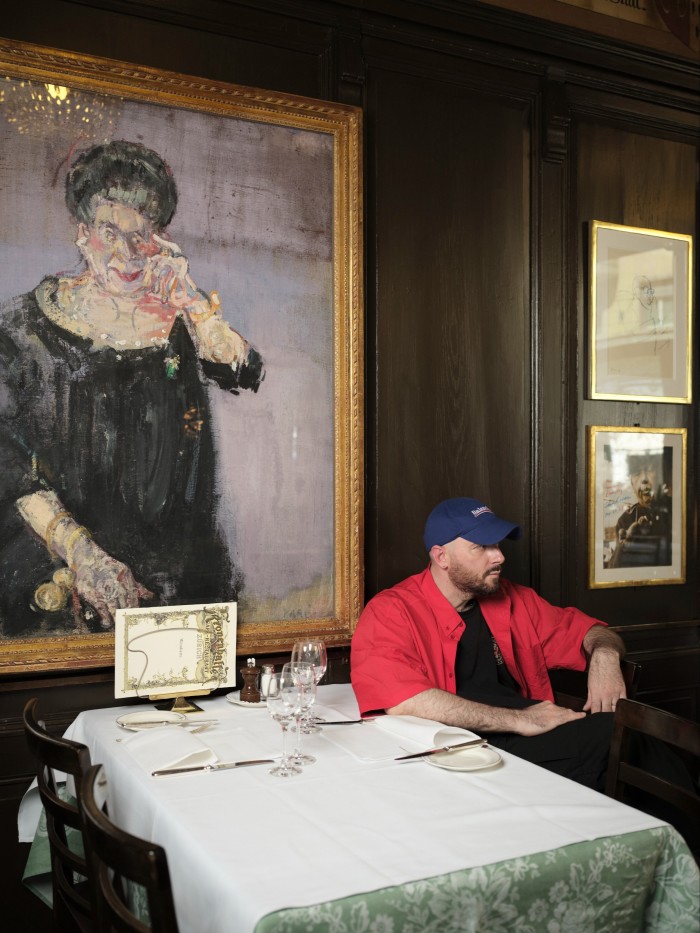
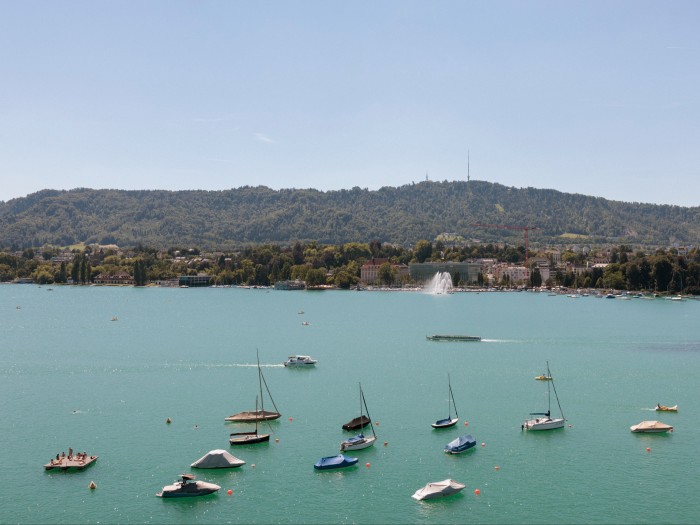
Lusa and Staiger are arguably a good encapsulation of Zürich itself: she an effervescent, chatty outsider from the Jura, he a quieter, more severe-looking tall Protestant natural-born Zürcher (although actually just as sweet). A quarter of the city’s residents aren’t Swiss, after all. When we meet in Schnupf, a hypey cocktail bar and steak restaurant, the city’s two faces are visible immediately: we can sit and drink cocktails with one of the owners, who still DJs at the venerable techno club Zukunft, another Zürich institution; but two minutes around the corner is Lusa’s bucolic studio, where there are nine chickens in the garden (she sometimes has the eggs for lunch). Lusa is another one who freely admits that she “hated Zürich, totally” when she turned up 20 years ago before uncovering its charms. Although “it took me 15 years to get into the lake”.
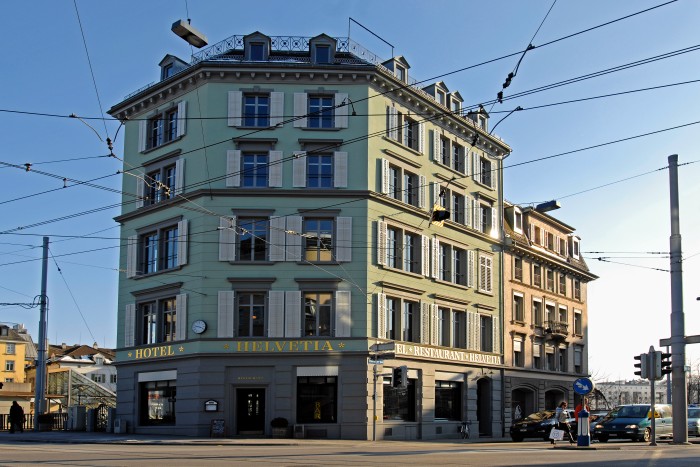
WHERE TO STAY
Hotel Helvetia (pictured) hotel-helvetia.ch
La Réserve Eden au Lac lareserve-zurich.com
FOOD & DRINK
Bar Lupo lupo.bar
Bauernschänke bauernschaenke.ch
Gamper gamper-restaurant.ch
Kronenhalle kronenhalle.com
La Muña la-reserve-zurich.com
ART & THEATRE
Galerie Gregor Staiger galerie.gregorstaiger.com
Kunsthaus Zurich kunsthaus.ch
Schauspielhaus Zurich schauspielhaus.ch
Zurich Art Weekend zurichartweekend.com
SHOPPING
On Labs on-running.com
Tasoni tasoni.com
Trunk trunkclothiers.com
The lake. That and Kronenhalle are the twin institutions that nearly everybody recommends in their first breath. You can swim in most places along the waters, from Limmat that winds through the city until it reaches the vast expanse itself. Some just fold their clothes on rocks and dive in, but most prefer the “Badis”, swimming clubs that often have bars attached, such as Panama Bar, Rimini or Bad Utoquai. The latter was the first place I went once I checked in at the nicely relaxed La Réserve Eden au Lac Zürich hotel, which opened a couple of years ago, filled with fresher, more 21st-century designs courtesy of Philippe Starck and his daughter Ara. I just crossed the street, and within three minutes I was in the water.
For Tsang, who moved here three years ago, the city’s appeal lies in this proximity to nature. She is even thrilled that the city essentially closes on a Sunday, which to many may sound like the kiss of death – but it’s actually the perfect excuse to go swimming or hiking. “It’s like nowhere else I’ve ever been,” says the artist, previously a beneficiary of a MacArthur Genius Grant. She signed to be director in residence at the Schauspielhaus for three years; it has been so successful, she and her collaborators have committed to another two. Here she enjoys twisting classics such as Carmen or Moby Dick for the audience – Pinocchio is next. You could still argue that it’s a far cry from her early 20s, spent hanging out in queer clubs, working on a film called Wildness – but oddly, she was warned. “I actually spoke to a psychic back then, and she said to me that she could see people, wearing bodysuits, dancing on a stage in some kind of public theatre. I was like: ‘OK, whatever.’ And it’s so weird, because I now make shows at one!”
I soon come to realise that it’s not that the clichés about Zürich aren’t true, it’s just that they can be seen a different way. Too small? Actually, it’s easy to navigate, and it means all scenes effortlessly overlap. You can shift from the more traditional centre to the edgier west in five minutes flat, with institutions such as the Hotel Helvetia – a particularly art-minded space, books about artists, their work and their hobbies placed in each bedroom – sitting nicely on the River Sihl, quite literally on the bridge. Too expensive? Yes, but also no, since most Zürchers politely point out that they tend to get the salaries to match: you have to remember, one curator tells me airily, the average supermarket cashier here earns £45,000. Too rule-based? Perhaps, but that can be a good thing, says chef Zineb Hattab, whose restaurants, Kle and Dar, are some of the freshest additions to the culinary scene. “It’s good when it’s rules for the benefit of everyone. There’s a strong sense of community here.”
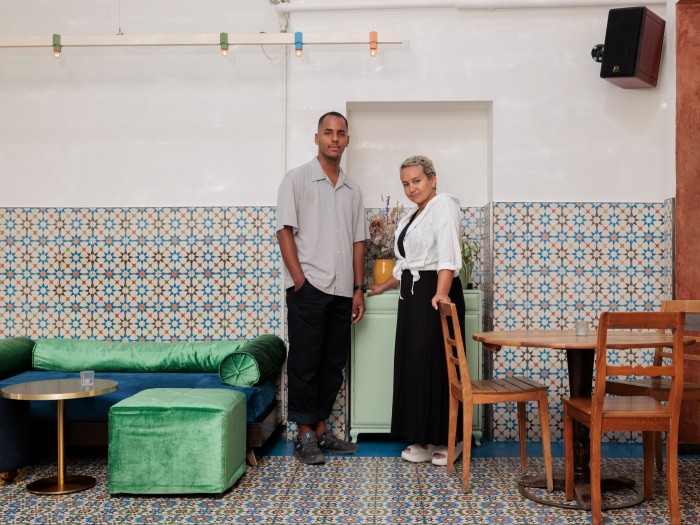
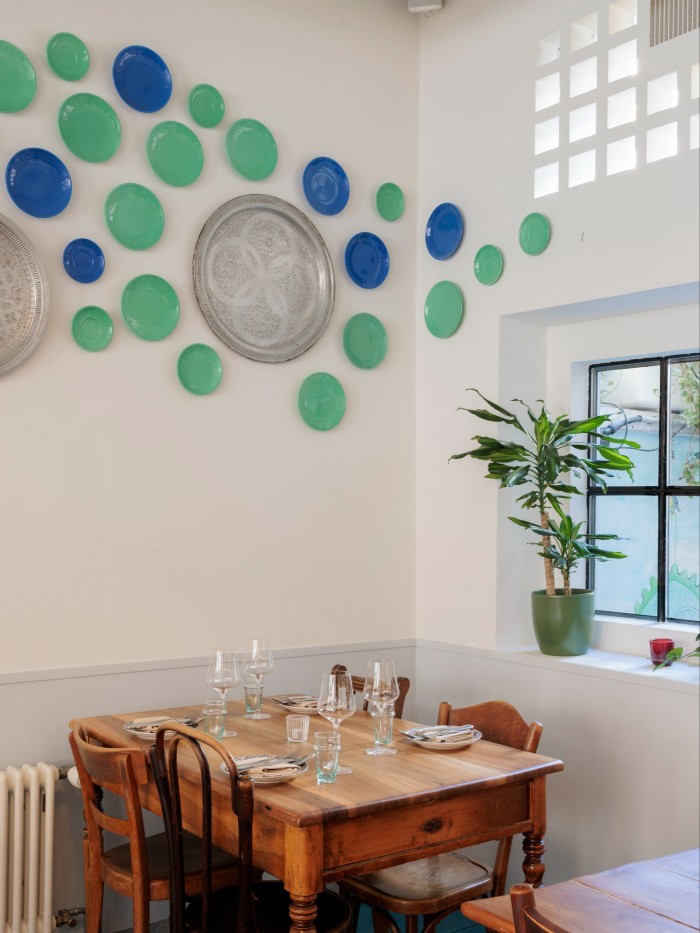
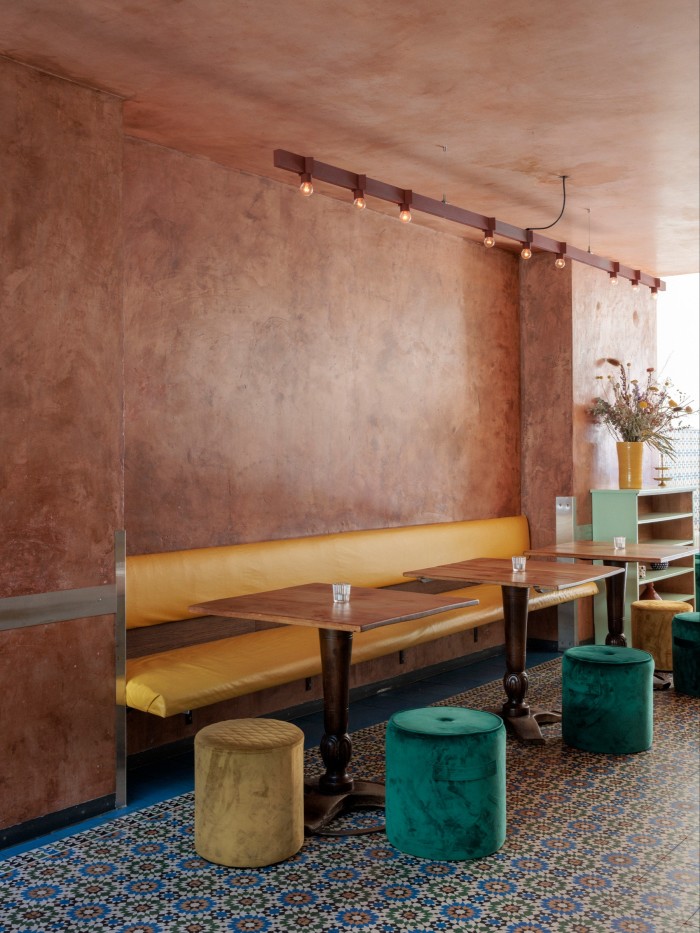
At Kle, first, and then Dar, which she opened last October, the Spanish-Moroccan Hattab proposes an entirely plant-based menu. This is no small feat in “the land of milk and meat and chocolate and cheese”, she chuckles. The reaction has been broadly positive. “They’re fine with oat milk in their coffee – but cheese is the final frontier.” In a previous life Hattab used to live in Zürich as an engineer. After converting to gastronomy, and spells in New York, Spain, Italy and Sweden, she felt Zürich was the best place to set up her own venture – the place, she notes, has only become more diverse in the interim too.
Elsewhere, gastronomes rave about Gamper, run by Marius Frehner according to similarly sustainable values, or Bar Lupo, opened earlier this year, where patrons can drink Negronis and eat fresh pasta late into the night. But Zürich has also welcomed various exciting pop-ups such as those organised by the Swiss-Dominican chef Olivier Bur. His Zhorigo project, created with his partner and co-founder Nikita Glasnović, has hosted events in bars and markets across the city, celebrating Mexican, Peruvian or Caribbean cuisine; he’s now putting the finishing touches to his own space.
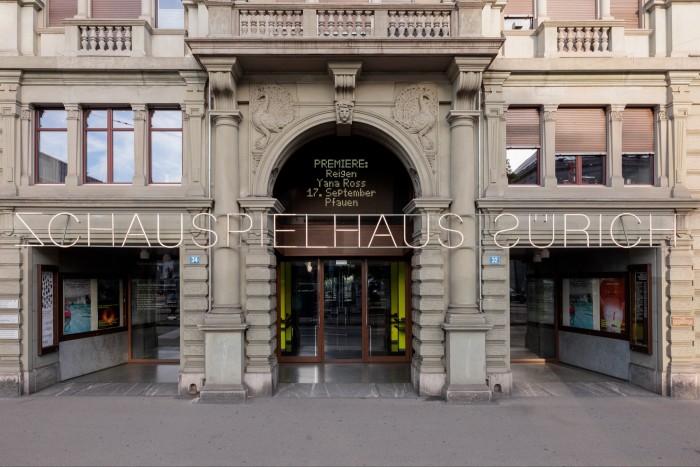
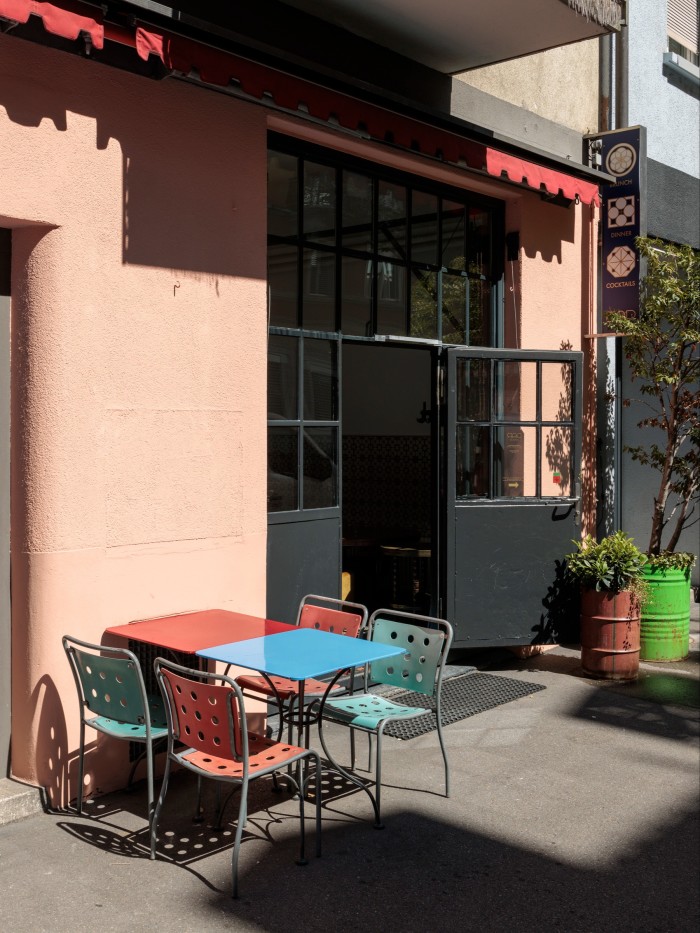
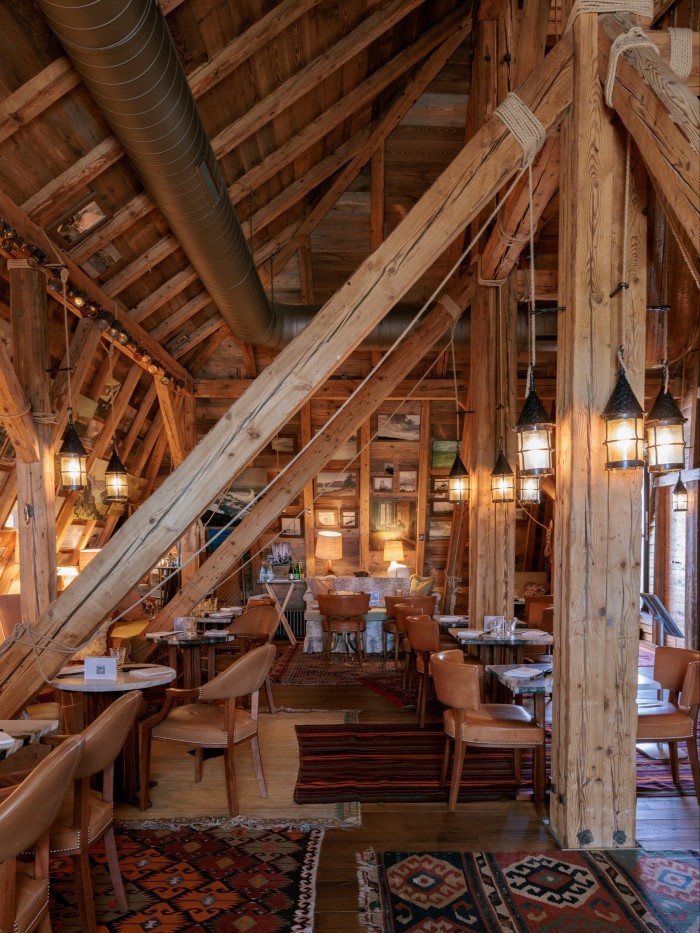
“There are a lot more people daring to do fun projects here, and they are not scared to collaborate,” says Bur when we brunch at Dar; as if to make his point, Hattab turns out to be a good friend. He also points to the 2018 reopening of the restaurant Bauernschänke, overseen by chef Nenad Mlinarevic, as another turning point. “Bauernschänke” actually means a place where farmers used to assemble after going to market; true to form, its simple, wood-panelled walls and benches once served solidly Swiss fare. Under Mlinarevic, though, the decor remains broadly the same but the gastronomy has gone particularly fine, with a strong line in natural wines.
Like many young Zürchers I meet, Bur is keen not to be stuffy or old-school – though he does also have a pleasing Swiss severity when it comes to his principles. He got so tired of being asked to bring Swiss chocolate back when he went to visit family in the Dominican Republic that he decided to make his own pure variant from only two ingredients; he uses every little last part, refusing to leave any waste. Everyone who has eaten it at his events has loved it, but he rolls his eyes whenever he’s told he should sell it “properly”. Why, he and Glasnović tut patiently, does everything have to revolve around profit? Of course, saying this in Zürich, of all places, could seem naive. But as we sit in Dar’s leafy courtyard, surrounded by its varied clientele, it also feels delicious and radical.
Louis Wise was a guest of the Hotel La Réserve Eden au Lac and the Hotel Helvetia
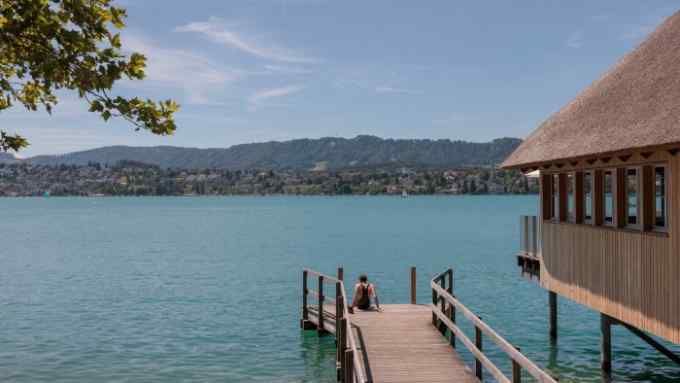
Comments